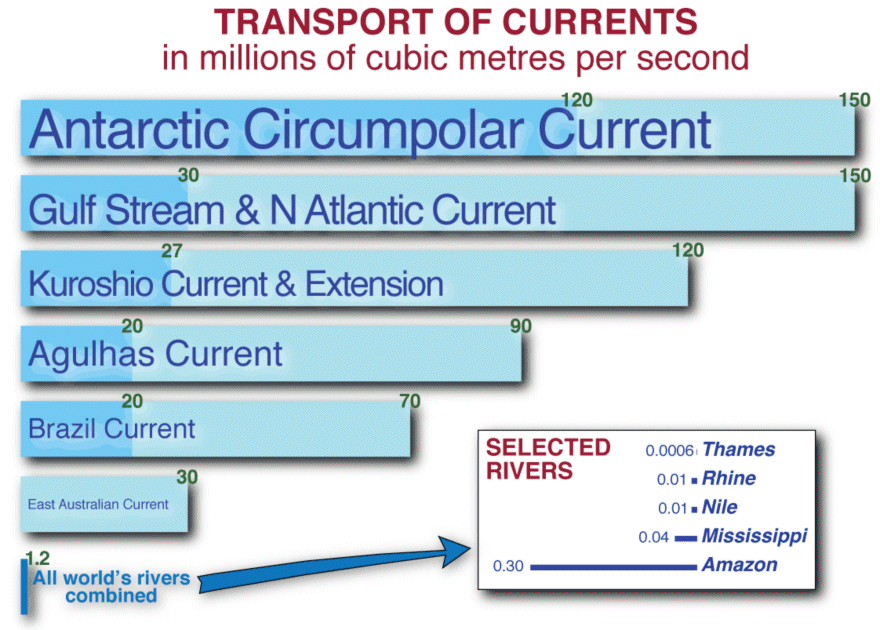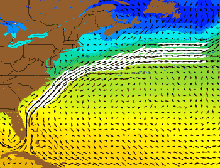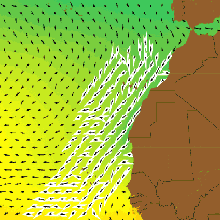1. Rivers in the Sea
Two very different currents
Currents are sometimes likened to giant rivers of warm or cold water flowing through the sea, except that their boundaries are less clearly defined than those of rivers on land.
Calling the Gulf Stream a river is not just a figure of speech. Current speeds in the Gulf Stream are typically 2-3 knots (1-1.5 m s-1), but can approach 5 knots (2.5 m s-1). This can make a big difference to ships that follow (or go against) the current.
Oil tankers, with economy cruising speeds of 14-15 knots, avoid the Gulf Stream when they are travelling south. This saves time and fuel - and money.
Where the current leaves America the separation between warm and cold water is so sharp that you can tell whether you are in the stream just by dipping a bucket in the water and taking the temperature. Here the Gulf Stream is literally a warm river, flowing over a bed of cold water, with cold-water banks.
The Canary Current on the opposite side of the Atlantic Ocean is quite different. It is slow and broad; its boundaries that are less sharp. Despite this, you can still distinguish it as a tongue of cool water reaching south towards the tropics.
The velocity of the Canary Current is typically 10-20 cm s-1 - only a fraction of the speeds reached by the vigorous Gulf Stream.

Source: P. Cipollini, NOC.
Transport by ocean currents
The figure above shows the transport by the major current systems in the ocean, compared with the overall river discharge and the maximum flow from selected rivers. Minimum and maximum current flows are given in Sverdrups - a Sverdrup (Sv) is a million cubic metres per second.
The flow of the largest ocean current, the Antarctic Circumpolar current is more than hundred times greater than the combined flow of all the world's rivers. This is why the inset showing river flow has to use a different scale.
Clearly these volumes of water can make a huge difference. The Gulf Stream and its continuation in the North Atlantic Current transport a large amount of heat towards Western Europe - equal to a million nuclear power stations.


